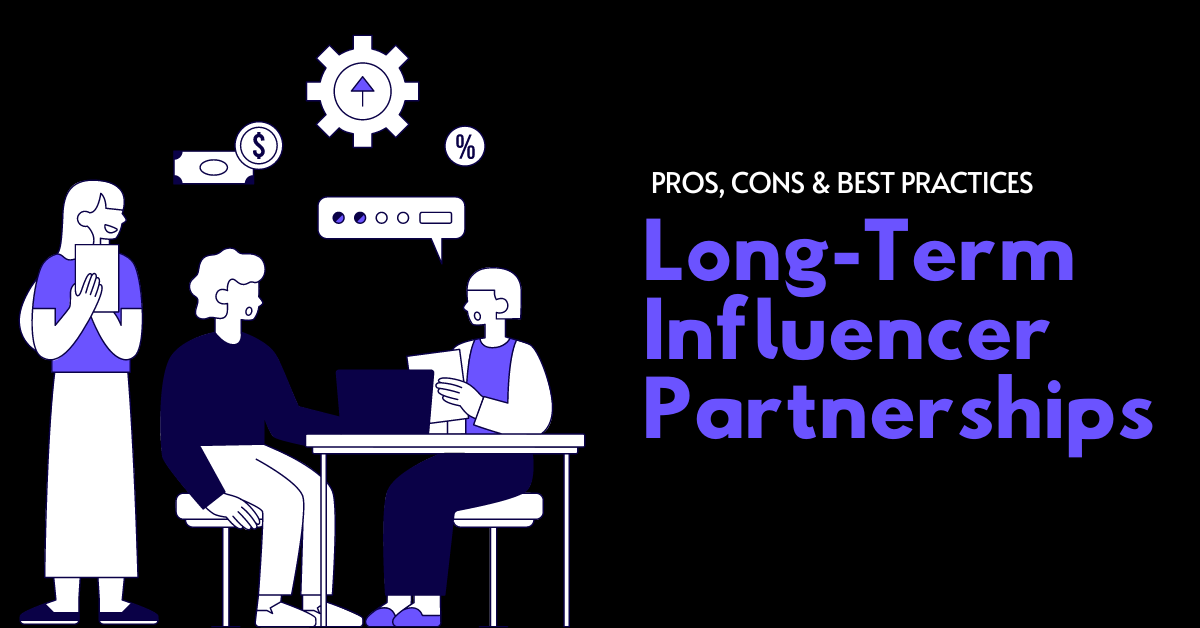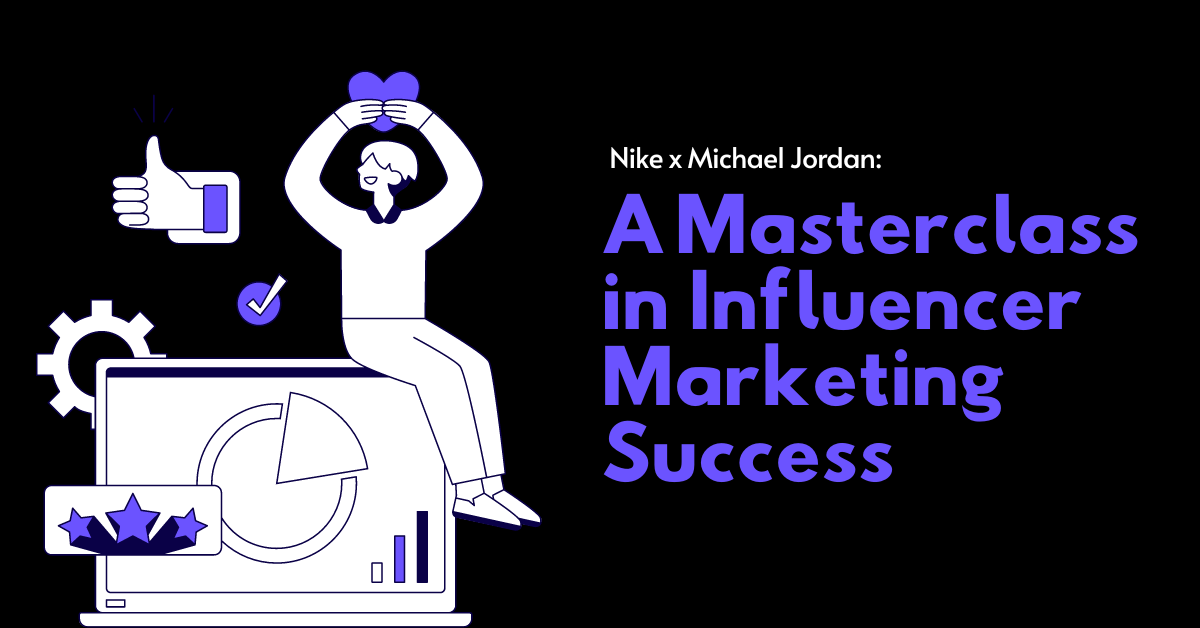The Influencer Marketing industry is projected to reach approximately $24 billion by the end of 2024. Today’s consumers place significant trust in reviews and opinions from influencers they follow, with 69% relying on influencer recommendations. This trust stems from the value consumers place on authenticity and transparency.
While Influencer Marketing presents a wealth of opportunities for businesses, it requires careful planning, execution, and ongoing optimization to maximize its impact. In this blog post, we will explore a comprehensive checklist that will guide you through the entire Influencer Marketing process, ensuring your campaigns resonate with your target audience and align seamlessly with your business objectives.
Planning Phase
1. Define Your Influencer Marketing Goals
- Clearly define your Influencer Marketing goals, e.g., brand awareness, sales, engagement, or brand love.
- Use the SMART criteria for your goals: Specific, Measurable, Achievable, Relevant, and Time-bound. For example, “Increase sunscreen product sales by 20% in 3 months by partnering with 5 skincare micro influencers.”
2. Identify Your Target Audience
- Segment your audience based on demographics like age, gender, location, and income levels.
- Understand their psychographics: interests, lifestyle, and values.
- Identify their online behavior, including the Social Media Platforms they use and the content they prefer.
3. Conduct a Competitor Analysis
- Research your competitors’ Influencer Marketing campaigns to identify opportunities and gaps in the market. Identify the influencers they have partnered with, the types of content they have produced, and the platforms they have targeted.
- Document insights about successful strategies and areas for improvement.
4. Set Your Budget
- Determine the overall budget for the campaign.
- Allocate funds for influencer compensation/fees, content creation costs, paid promotions, and tools like Influencer Marketing Platforms.
- Set aside a contingency fund of 10-15% for unexpected expenses.
5. Choose a Campaign Type and Select Social Media Platforms
- Select a campaign type based on your goal, e.g., brand awareness campaigns (reviews, testimonials), engagement campaigns (contests, giveaways), and conversion campaigns (promo codes, affiliate links).
- Choose the Social Media Platforms most used by your target audience and consider platform strengths, e.g., Instagram for visuals, YouTube for long-form video content, and TikTok for short, viral videos.
6. Find and Analyze Influencers
- Use Social Media keyword searches or Influencer Marketing Platforms like Creable to find relevant influencers in your niche.
- Choose the influencer type: nano (1K-10K followers), micro (10K-100K followers), macro (100K-1M followers), or mega influencers (1M+ followers).
- Check their niche relevance, engagement rates, past brand collaborations, authenticity (audience quality, fake followers), content quality (tone, style), and audience alignment with your target audience.
- Shortlist potential influencers.
7. Develop a Campaign Brief
- Outline the campaign type, goals, target audience, and key messaging.
- Specify content deliverables, deadlines, brand guidelines, and Social Media Platforms.
- Allow influencers the freedom to create content that resonates with their audience.
8. Set Performance Metrics
- Define clear metrics to track campaign performance, such as click-through rates (CTR), engagement rates, and sales.
Action Phase
9. Outreach and Negotiation
- Briefly introduce yourself and your brand, explain the campaign goals and target audience, and highlight the benefits for the influencer.
- Keep the outreach personalized and professional, and send follow-up messages if necessary.
- Share the campaign brief with influencers, clarifying expectations, deliverables, timelines, and compensation.
- Negotiate terms, such as payment, content rights, etc.
10. Contract Agreement
- Document expectations by clearly outlining deliverables, deadlines, and compensation.
- Include clauses detailing content ownership, usage rights, and exclusivity.
- Include legal requirements (disclosures).
- Specify the success metrics and reporting requirements.
Campaign Execution
11. Content Creation and Review
- Work with influencers on content ideas, providing creative assets (logos, style guides, and product shots) to help them create high-quality content.
- Ensure the content aligns with brand guidelines and audience preferences.
- Establish a review and approval process, providing clear feedback and revision guidelines.
12. Campaign Launch and Promotion
- Coordinate the launch date and time with influencers.
- Amplify the reach by using paid promotions, such as Social Media ads.
- Cross-promote the influencer content on your brand’s Social Media channels.
- Repurpose content for different platforms and formats to maximize reach and impact.
- Engage with the influencer’s audience through comments and shares.
13. Influencer Payments
- Process payments and manage invoices based on the agreed compensation model, e.g., pay per post, and revenue share.
Measure Phase
14. Track Campaign Metrics
- Use Social Media analytics tools, track website traffic and conversions, and get reporting from Influencer Marketing Platforms.
- Monitor metrics such as reach, impressions, click-through rates (CTR), engagement, and conversions.
15. Analyze Performance
- Compare results against predefined KPIs to evaluate the overall success of the campaign.
- Assess the effectiveness of the campaign and identify areas for improvement.
16. Maintain Relationships with Influencers
- Nurture ongoing relationships with successful influencers by maintaining open communication.
- Consider long-term partnerships or influencer programs for top-performing influencers.
Learn and Iterate Phase
17. Document Insights
- Summarize key findings in a report, identifying successes, challenges, and areas for improvement.
- Gather feedback from influencers and your audience and share insights with relevant stakeholders.
18. Learn and Optimize
- Use the insights gained to adjust and improve future campaigns.
- Refine targeting, and optimize influencer selection, content creation, and measurement tactics.
- Apply the learnings from previous campaigns to new ones, testing new strategies and content formats.
- Use A/B testing to continuously improve content and strategies.
By following this comprehensive Influencer Marketing checklist, you will be well equipped to plan, execute, and optimize successful campaigns that drive tangible results for your business. Remember, Influencer Marketing is an ongoing process, and continuous learning and iteration are key to staying ahead of the competition.
If you are looking for a reliable and price-efficient solution to streamline your Influencer Marketing efforts, consider Creable – an all-in-one Influencer Marketing Platform that simplifies influencer discovery, analytics, messaging, campaign management, post tracking, and reporting. With Creable, you can quickly identify the right influencers for your brand, share briefs, and track campaign performance, all in one centralized location.



